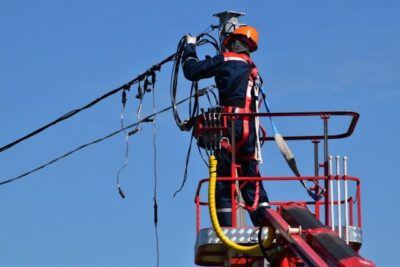In today’s fast-paced and increasingly complex world, emergency response relies on far more than sirens and flashing lights. Behind every well-executed emergency rescue, a robust communication network is working overtime to ensure that messages reach the right people at the right time. One of the most vital systems supporting this network is the Emergency Responder Radio Communication System (ERRCS). Often invisible to the public eye, this system plays a powerful role in keeping people safe when every second counts. As buildings grow taller and infrastructure becomes denser, ERRCS has emerged as a game-changer in life-saving communication during a crisis.
Understanding the Role of ERRCS
At its core, an Emergency Responder Radio Communication System ensures that first responders can maintain uninterrupted radio communication inside buildings, especially during fires, natural disasters, or active shooter events. Traditional radios often struggle with signal penetration in structures made of steel, concrete, or energy-efficient materials. ERRCS fills that gap by amplifying and relaying radio signals where they’re needed most—inside stairwells, underground garages, and high-rise floors where lives may be at stake.
Why Modern Buildings Need ERRCS
Modern architecture favors energy efficiency and durability, but these features often create radio frequency dead zones. For emergency teams, these communication blackouts are more than an inconvenience—they’re a hazard. Without a stable signal, firefighters may not receive evacuation updates, and police officers might lose contact during pursuit. ERRCS solves this by providing a dedicated in-building system that captures outside radio signals and redistributes them throughout the building using strategically placed antennas and repeaters.
Boosting First Responder Safety
One of the most overlooked aspects of ERRCS is its role in protecting the safety of first responders. When entering unfamiliar and dangerous environments, responders rely heavily on radio communication for coordination, updates, and situational awareness. A dropped signal can result in confusion, duplicated efforts, or even deadly missteps. With ERRCS in place, these professionals can operate with confidence, knowing that critical instructions won’t be lost mid-transmission. That added layer of security often makes the difference between containment and catastrophe.
Enhancing Public Safety During Emergencies
The public also benefits directly from ERRCS, even if they never see the equipment or understand how it works. When emergency crews communicate effectively, they can evacuate buildings more quickly, locate trapped victims faster, and neutralize threats with greater precision. ERRCS ensures that building occupants aren’t left in the dark due to a system failure or lost signal. The seamless flow of information translates into faster resolutions and fewer casualties in high-stress situations.
Meeting Legal and Code Requirements
In many jurisdictions, ERRCS installation is not just a recommendation; it’s a legal requirement. Building and fire codes across the United States, including those outlined in the International Fire Code (IFC) and National Fire Protection Association (NFPA) standards, now mandate that certain structures must have an operational ERRCS. These include high-rises, sprawling campuses, and buildings with underground levels. Failing to comply can delay occupancy permits and expose building owners to liability in the event of an emergency. Installing a code-compliant ERRCS from the beginning saves time, money, and potential legal headaches.
Supporting Multi-Agency Communication
During large-scale emergencies, multiple departments often work together—firefighters, police, EMS, and even federal agencies. If each of them operates on a different frequency, communication breakdowns are inevitable without a centralized relay system. ERRCS supports multi-agency interoperability, ensuring that all parties involved can connect, regardless of which radio band they use. This capability is crucial during complex responses like school shootings, mass casualty incidents, or urban fires that span multiple buildings.
Making Old Buildings Crisis-Ready
While newer constructions are often designed with ERRCS in mind, older buildings are particularly vulnerable to communication failures. Retrofitting these structures with ERRCS components is one of the most effective ways to bring them up to modern safety standards. Whether it’s a hospital built decades ago or a historic government building, an Ean RRCS installation can instantly improve emergency readiness without altering the building’s appearance or purpose.
Accelerating Response Time
Time is the most valuable commodity in any emergency. The faster responders can assess a situation and communicate their next move, the more likely they are to save lives and reduce damage. ERRCS minimizes delays caused by spotty reception or blocked signals, enabling real-time decisions based on accurate information. In fire scenarios where conditions can change in minutes, or in medical emergencies where every second matters, the ability to communicate without delay is a major advantage.
Technology That Evolves With Risk
What makes ERRCS particularly future-proof is its ability to evolve in tandem with the threats we face. As natural disasters become more frequent and urban areas grow denser, the risk landscape shifts. ERRCS systems can be upgraded and scaled to accommodate new communication standards, frequencies, and even smart integration with building automation systems. This flexibility ensures that buildings equipped today will remain protected tomorrow, regardless of the crisis that may arise.
A Smart Investment in Safety
From a financial perspective, ERRCS is one of the most strategic safety investments a property owner or manager can make. Not only does it help ensure compliance and reduce liability, but it also increases the property’s appeal to tenants, corporations, and government agencies. Buildings with fully operational emergency communication systems are more likely to pass inspections and less likely to experience catastrophic failures during crises.
In an emergency, clear and uninterrupted communication is not a luxury—it’s a lifeline. ERRCS serves as the silent powerhouse behind effective emergency response, ensuring that first responders can stay connected when it matters most. Whether it’s navigating through high-rise buildings, coordinating across agencies, or responding to life-threatening situations, the advantages of ERRCS are undeniable. It’s a system that not only meets safety codes but also saves lives by reducing response times and eliminating communication blackouts. If you’re serious about enhancing safety and compliance in your building, consider Pacific DAS to explore reliable ERRCS solutions tailored to your specific needs.
View the original article and our Inspiration here


Leave a Reply